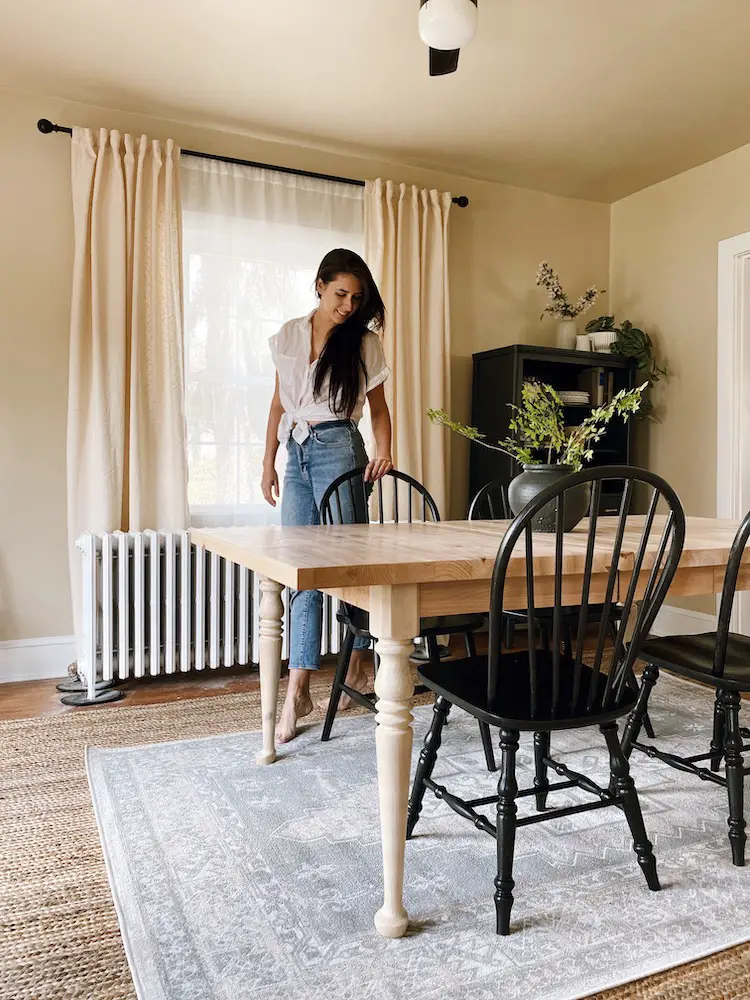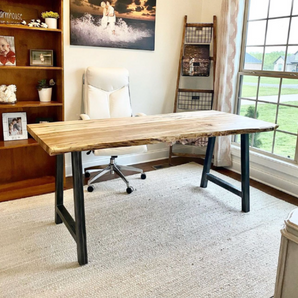Dining Room Table Legs That Incorporate Capability and Modern Layout
Dining Room Table Legs That Incorporate Capability and Modern Layout
Blog Article
Picking the Perfect Eating Table: What Styles Work Best for Your Home?
Picking the perfect eating table for your home can be a nuanced procedure that balances appearances and functionality. To browse these selections effectively and discover a table that absolutely complements your home, consider the complying with facets in detail.
Evaluating Your Area
Reviewing the dimensions and layout of your dining area is a crucial initial step in picking the perfect table. Begin by measuring the length and width of the space, making up entrances, home windows, and various other architectural features that can affect table positioning. This guarantees that your table not just fits however additionally enables comfy activity around it.
Take into consideration the variety of individuals you usually amuse. A table needs to suit your house's day-to-day demands while supplying enough flexibility for periodic guests. Generally of thumb, allocate a minimum of 24 inches of table size each to make certain a comfy dining experience.
It's also important to preserve suitable clearance around the table. Ideally, there need to go to least 36 inches between the table edge and wall surfaces or various other furniture, allowing easy access and activity. For areas where chairs with arms or extra storage units like buffets are involved, increasing this clearance to 48 inches is a good idea.
Lighting and ambience play considerable roles. Ensure that your table lines up with existing lighting fixtures or plan for ample illumination solutions. This thorough spatial analysis guarantees that your eating table not only fits literally however also balances with your room's total functionality and aesthetic.
Popular Table Styles

Standard table commonly include elaborate details, rounded legs, and abundant timber surfaces, evoking a sense of timeless style. They are excellent for homes with timeless decoration or those seeking to include a touch of class to their dining area.
Modern eating tables prioritize simplicity and clean lines, often including products like glass and steel. These tables are excellent for modern areas, offering a sleek and minimalist appearance that enhances minimal layout approaches.
Rustic dining tables, on the other hand, emphasize all-natural materials and a handcrafted appearance - dining room table legs. They typically feature redeemed wood and a distressed coating, producing a cozy and welcoming atmosphere. These tables work well in farmhouse-style homes or those looking for a cozy, organic feel
Industrial eating tables integrate resources such as steel and wood, typically showcasing a practical aesthetic. This design is appropriate for loft spaces or metropolitan spaces, including a touch of rugged charm and resilience to the eating experience.
Each style supplies unique benefits, making it vital to choose one that lines up with your home's overall layout and your personal choices.
Product Options
When picking a dining table, the selection of material plays a critical role in determining both the table's appearances and performance. Timber, metal, glass, and composite materials each deal unique benefits and difficulties, making it crucial to straighten the product with your home's style and way of life demands.
Wood is an ageless and functional choice, offered in selections such as oak, walnut, and mahogany. Known for its toughness and heat, timber complements both standard and modern interiors. Nevertheless, it calls for normal maintenance to avoid scrapes and bending.
Steel tables, usually crafted from read more stainless steel, aluminum, or wrought iron, are applauded for their contemporary charm and toughness. They are especially suited for commercial or minimalist settings however can be susceptible to dents and may feel chilly to the touch.
Glass eating tables bring an air of elegance and openness, ideal for smaller sized spaces as they create an illusion of more room. While very easy to tidy, glass can be at risk to spots and calls for careful dealing with to prevent chips and cracks.
Composite materials, such as MDF and plywood, offer cost-effective and customizable solutions, though they might do not have the long life Get More Information of all-natural products. Choosing the best material guarantees your table is both a practical possession and an aesthetic delight.
Sizes And Shape Considerations
After figuring out the suitable material for your eating table, the following consideration is choosing the best form and dimension to fit your space. The form of the table substantially influences the room's visual and performance. Rectangular tables, the most usual shape, are perfect for bigger areas and can accommodate a greater variety of guests. They also allow for a much more official dining experience. Alternatively, round tables foster a feeling of intimacy and are excellent for smaller sized dining locations, motivating discussion by getting rid of corners and making everybody really feel just as included.
Size is just as important and should be determined by both the room's dimensions and the variety of individuals you plan to seat regularly. As a policy of thumb, allocate at least 24 inches useful site of table size per person to guarantee comfy eating. Additionally, consider the table's clearance area: there need to go to least 36 inches between the table side and the wall surfaces or various other furniture. This guarantees that restaurants can move quickly without really feeling confined. Extending tables provide versatility if you regularly organize bigger gatherings, supplying added seats when needed without occupying extra area daily. Choosing the appropriate shape and size makes sure both usefulness and visual consistency in your eating location.
Matching Your Design
Selecting a table that harmonizes with your existing decor is crucial in producing a cohesive and welcoming area. Begin by evaluating your existing interior decoration style, whether it be contemporary, standard, rustic, or diverse. The table must complement the total visual, not take on it. For example, a streamlined, minimalist table with tidy lines is optimal for a modern-day home, while a vintage, luxuriant table fits an extra typical setting.
Shade and product are equally substantial. If your style features cozy tones and natural materials, take into consideration a wooden table to boost the natural feeling. On the other hand, a glass or steel table might be better in an area controlled by amazing shades and commercial elements. Focus on the coating, as it ought to mirror other furniture and components to keep harmony.
Appearance plays a crucial function. A rough-hewn, redeemed wood table can add character to a rustic space, while a refined marble surface area can elevate an elegant eating location. Think about the scale and proportion of the table in relationship to the area dimension and existing furnishings. A well-matched table not just improves aesthetic appeal however likewise enhances the total dining experience.

Final Thought
Selecting the optimal eating table requires cautious consideration of area, style, materials, shape, and size. Conventional tables complement classic interiors with rich wood surfaces, while contemporary tables fit contemporary settings through glass and metal.
Report this page